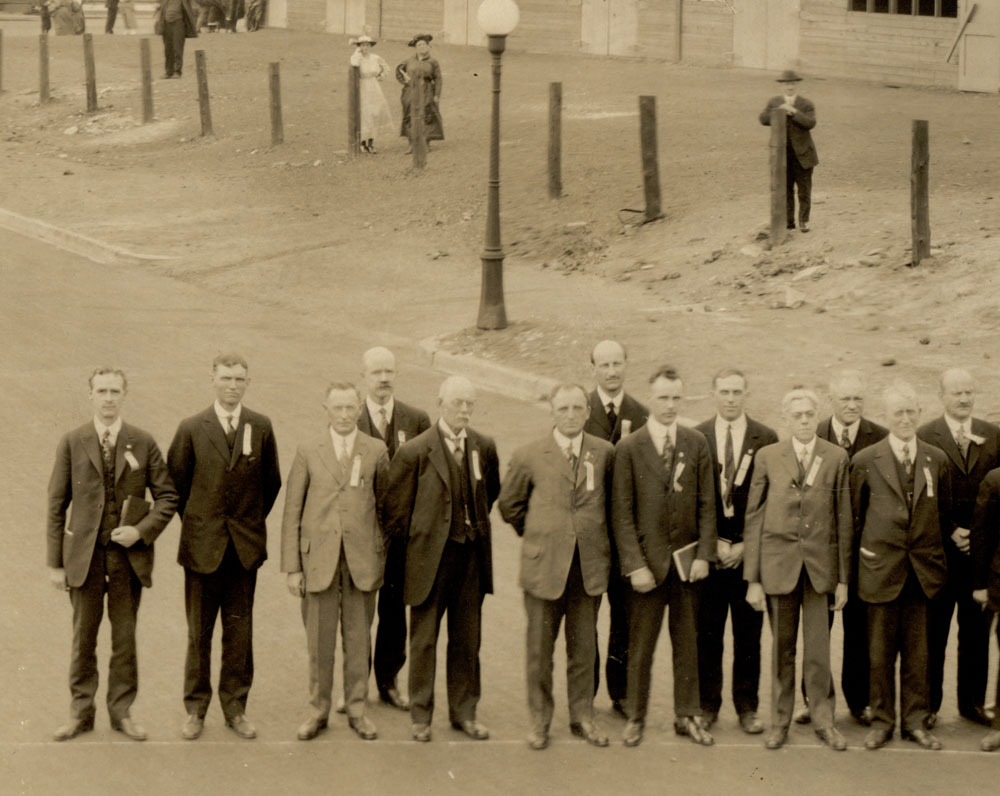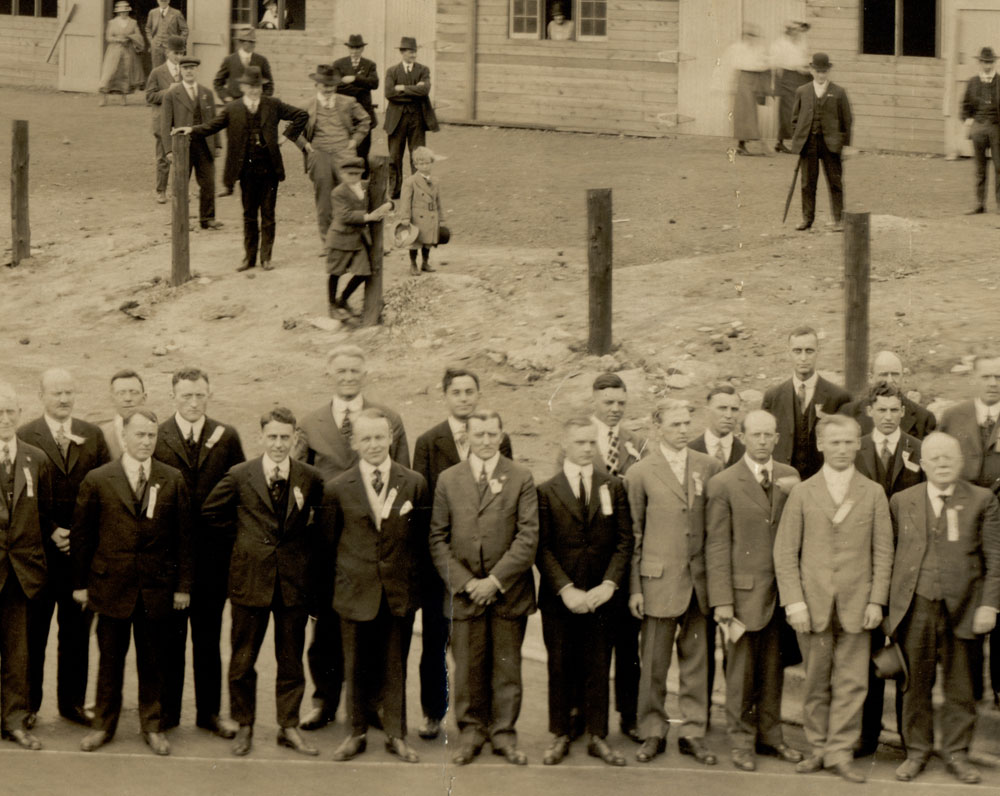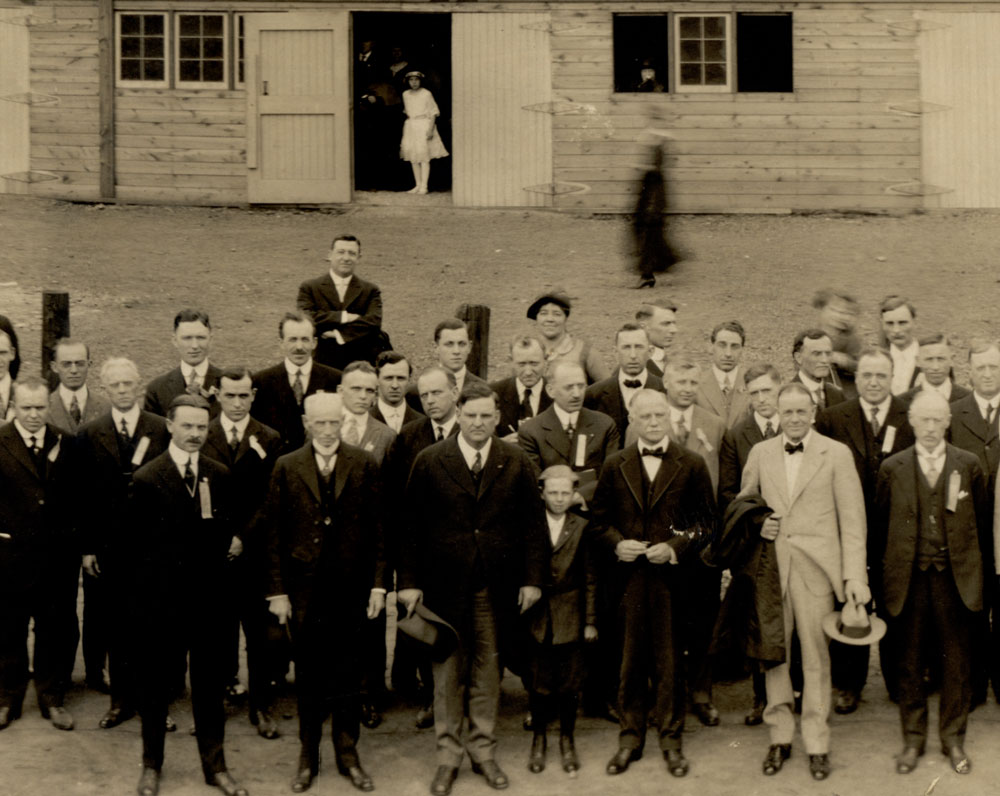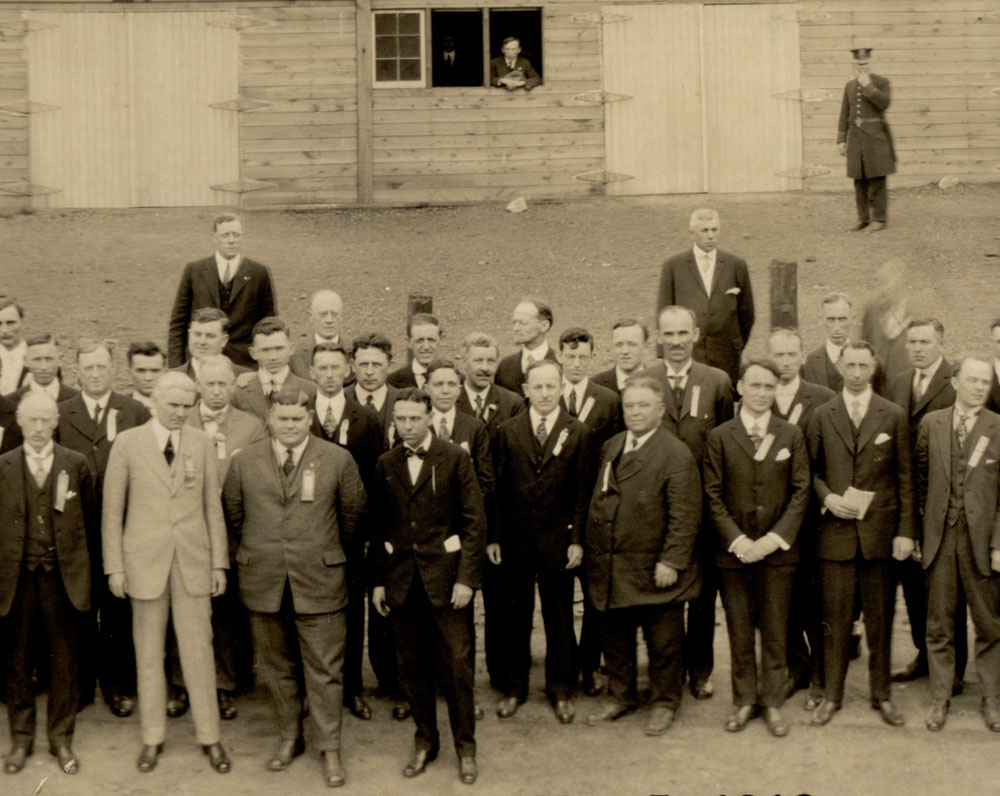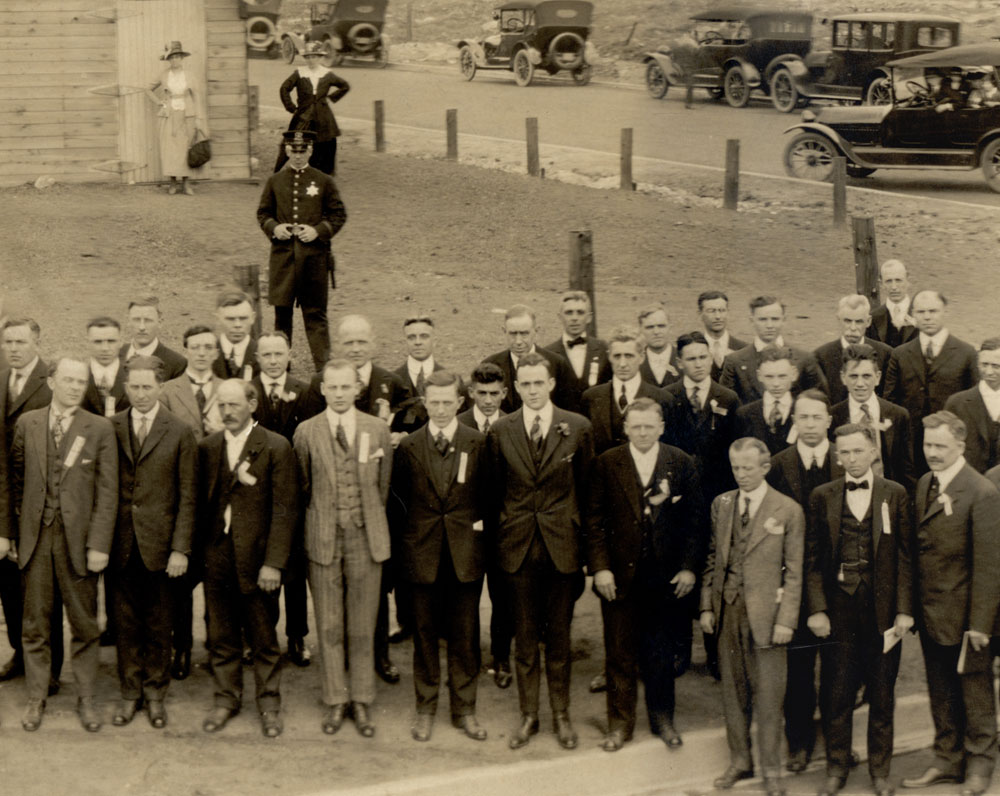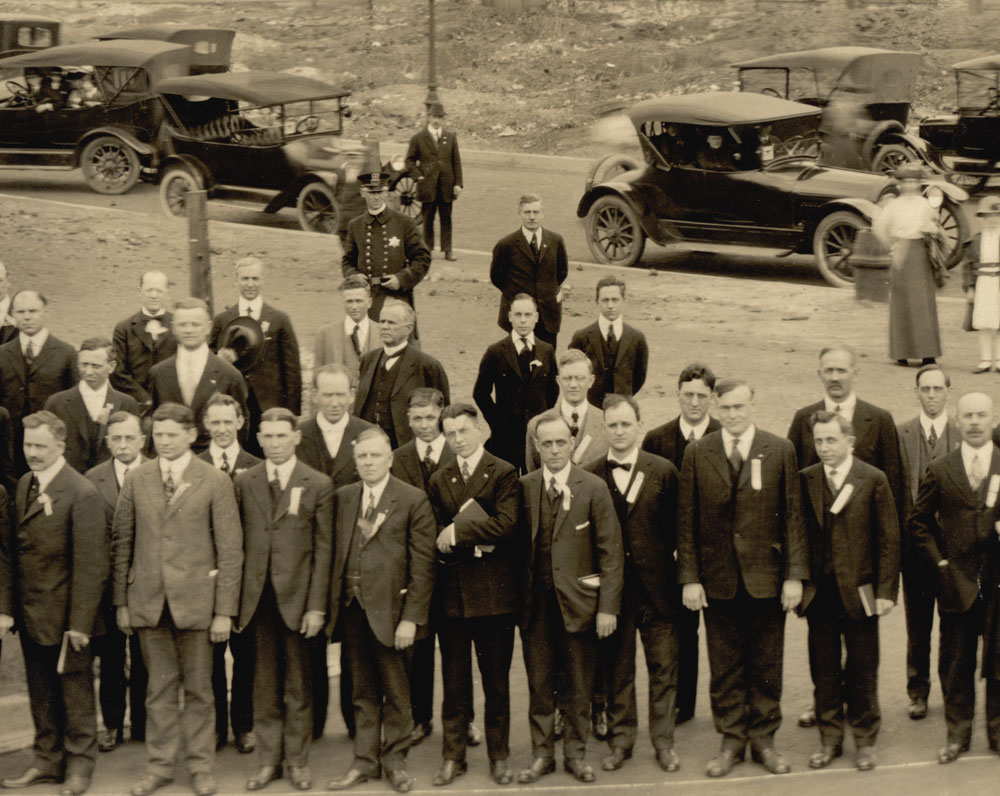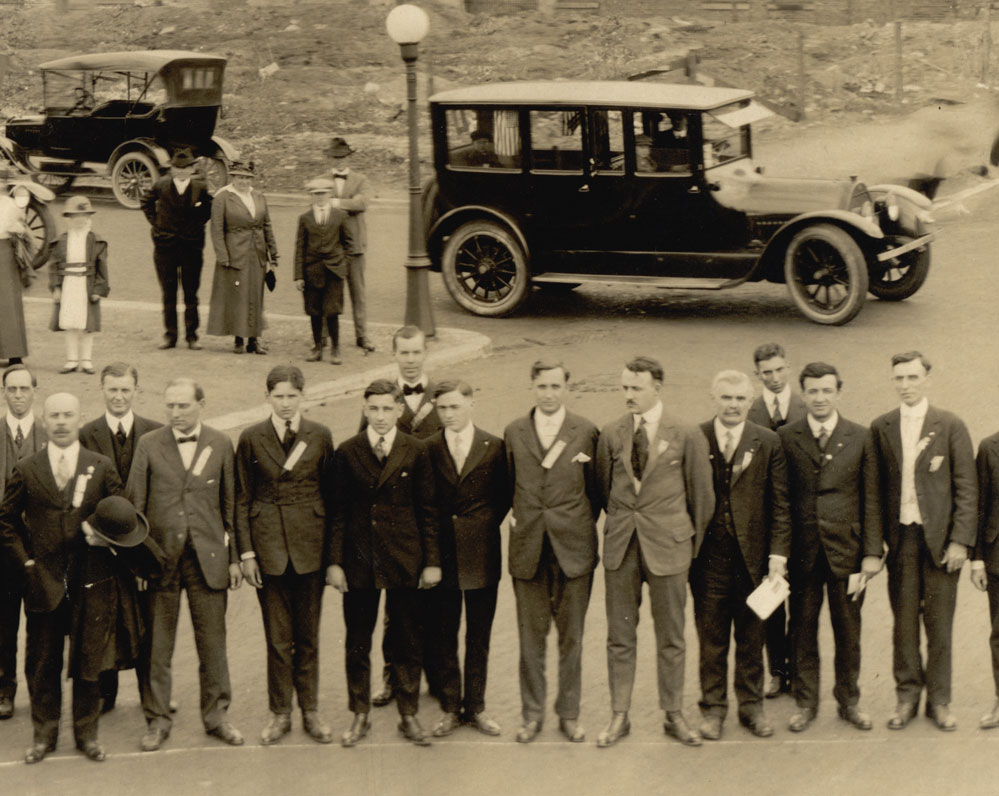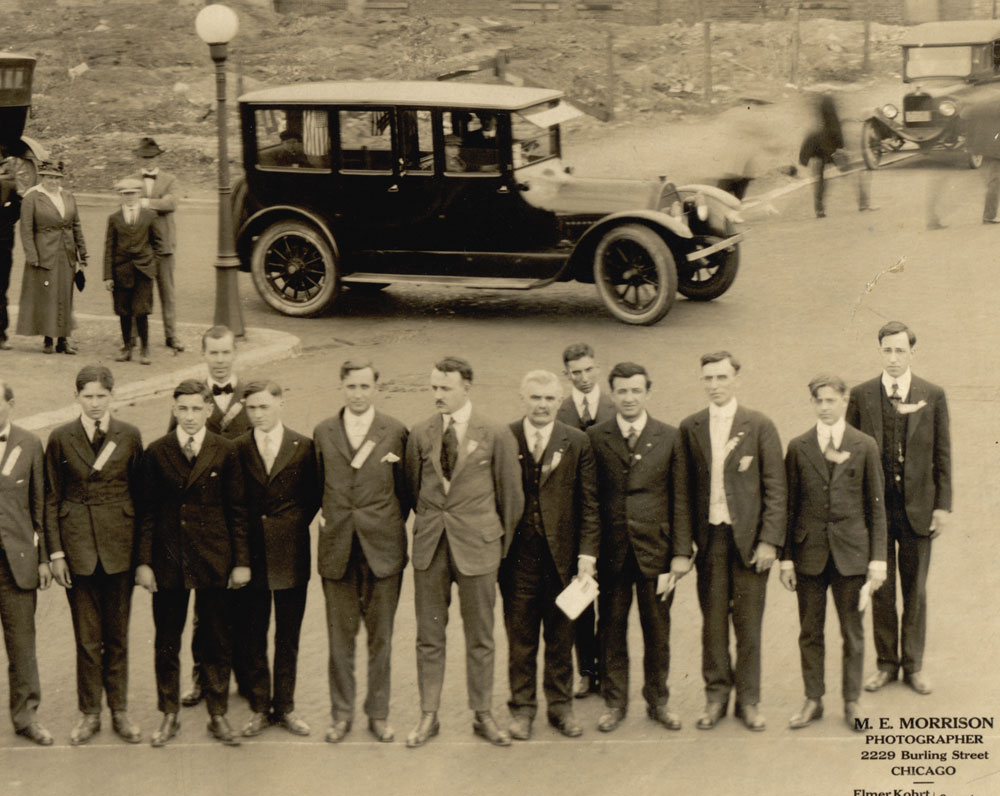When Billy Sunday came to Chicago, he was not a stranger to the city, having played 2nd base for the Chicago White Stockings (1883-1888). In the intervening 30 years, he had been ordained in the Presbyterian Church, served as a full-time worker in Chicago's YMCA, and worked for evangelists J. Wilbur Chapman and Milan B. Williams. In 1896, Sunday began holding his own evangelistic campaigns, reaching its pinnacle in 1917 in New York City, at which 98,000 faith decisions were recorded.
Billy Sunday's 1918 campaign in Chicago was an intensive endeavor (March 10 to May 19). A great impact on the metropolis was expected, as indicated by contemporary comments, such as this one from a March 18, 1918 letter of Eugene Gilmore, superintendent of Wesley Memorial Hospital, "Billy Sunday is creating a profound impression. Nearly everybody talks about him. He seems to be growing in favor. Every evening and afternoon, except Mondays, and three times on Sundays he fills his tabernacle with about fifteen thousand people. Great results are anticipated" (Quotation provided by Susan M. Sacharski, Archivist, Northwestern Memorial Hospital)
The tabernacle structure itself was constructed on Chicago's lakefront at the corner of Lake Shore Drive and Chicago Ave. (There are no schematics of the site available that indicate the orientation of the structure or which side of Chicago Avenue; from the image, it appears that the shoreline of Lake Michigan may be at the left beyond the few trees or behind the photographer; the site was most likely adjacent to the current location of the Museum of Contemporary Art.) Sunday's secretaries did most certainly reflect the extensive organization of the campaign team and volunteers. Here is how a contemporary book on Sunday's campaigns described the work of the secretaries: "Without the assistance of personal-work secretaries the rush forward when the invitation is extended would mean a frantic mob. The recruits have to be formed into line and directed to the pulpit where they take Mr. Sunday’s hand. Then they must be guided into the front benches and the name and address and church preference of each secured. While the invitation is being given personnel workers all over the building are busy gathering converts. The magnitude of the Sunday evangelistic meetings in their results is revealed by the necessity for systematically handling the converts as vividly as by any other one factor." ("Billy" Sunday: The Man an His Message, by William T. Ellis, 1914, pages 67-68.)
While there are several women and policemen in the background, and others observing the line-up and therefore part of the picture, only Ma Sunday and one other female (a blur almost directly above Sunday behind the back row of male secretaries) appear as part of the line-up of men. The blurred figures, most noticeable at the far right, indicate motion. With the exception of Billy and Ma Sunday, none of the others in the photograph are identified with certainty; however, it is possible that the fourth person from the left may be Sunday's pianist, B. D. Ackley. The enlarged segments below provide the opportunity to explore the details in the photograph (buildings and automobiles in the
background, observers, several police officers, women, children, and the American flags hung vertically in the back side windows of one of the cars).
Several interesting background notes related to this image:
This photograph is representative of the panoramic images that were first realized in Daguerreotypes prior to the Civil War and became popular in the 1880s with the marketing of cameras like the Wonder Panoramic.
Sunday's Chicago campaign is also remembered in popular culture. His opposition to the production and sale of alcohol was a mainstay in his preaching of this era, During his Chicago campaign the city was getting ready to vote on a local option which would have made Chicago a dry town, that is, would the sale of alcohol. The measure failed, despite Sunday's strenuous efforts on its behalf. His opposition, and its ineffectiveness, was remembered in Fred Fisher's "Chicago" (1922) that was recorded by Frank Sinatra in 1957. One of the verses includes these two lines:
Bet your bottom dollar you lose the blues in Chicago, Chicago
The town that Billy Sunday could not shut down
This image and other documents in the BGC Archives tell the story Sunday's campaigns throughout the United States, his colleagues and contacts in ministry, and his energetic preaching style. This photograph is from Collection 29—Ephemera of Billy Sunday. The microfilm edition of Billy Sunday's papers (Collection 61) is available through interlibrary loan; (originals are held at Grace Seminary in Winona Lake, Indiana). For more on Sunday and his meetings, visit our online exhibit, Hitting the Sawdust Trail with Billy Sunday. Click photograph above or any segment below to view enlarged version. |
![]()

